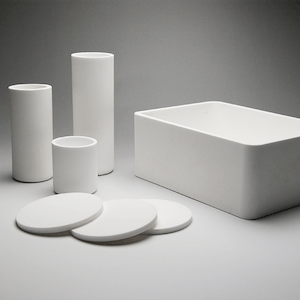In the refractory industry, one of the widely used materials is magnesia. It is also known as magnesium oxide. Magnesium oxide is a good choice for refractory because of its high thermal conductivity and low electrical conductivity. It has lots of applications in the refractory industry.
Magnesium oxide is a hygroscopic solid mineral that occurs naturally in the form of periclase, and it is physically and chemically stable at high temperatures. It is a natural source of magnesium, but magnesium oxide itself is produced through the calcination of magnesium carbonate or magnesium hydroxide. These properties make it ideal as a refractory material. Magnesium oxide has several important applications in different industries. It is used in wastewater treatment, soil and groundwater remediation, drinking water treatment, waste gas treatment, etc. Also, in the food industry, it is used as a food additive, an anti-caking agent.
The application of magnesia in the refractory industry is connected to its unique properties. Magnesium oxide has a very high melting point of 5,072 °F (2800 °C). High resistance to basic slag. It has high thermal conductivity and low electrical conductivity. Dead-burned magnesia produced in rotary kilns above 1500 °C reduces chemical reactivity. Magnesium oxide particles are odorless and non-toxic. They are very hard and pure. Magnesium oxide particles are white powder.
MgO is mostly used in the refractory industry, more than any other field or industry in the world. In the United States, the refractory industry alone consumed approximately 56% of magnesia in 2004, with the remainder being used in agriculture, chemical manufacturing, construction and many other applications. Magnesium oxide (MgO) is used to produce basic materials such as monolithic shells, magnesia-carbon based refractory bricks, castables, spinel formulations and ramming mixes. All of these are widely used in steel refractory linings. In refractory applications, limestone is used as the primary flux for slag removal.
Refractory materials are materials that can withstand very high temperatures (above 1,000°F), which are typical for many producing processes. They help protect industrial processes that require high heat. Refractory materials are more heat resistant than metals. These materials are used to line hot surfaces in industrial production plants. Magnesium oxide is one of such materials.It is used as a basic refractory for crucibles and many industrial processes. Its properties make Mgo a perfect refractory material. It is easy to get and is relatively affordable than other refractory materials. This makes magnesium oxide the better choice than heat-intensive metal, glass and fired ceramic applications.
Magnesium oxide can also be used as an insulator for heat-resistant cables. In ceramics, magnesium oxide doping is effective for suppressing grain growth and improving the fracture toughness of ceramics. In addition to its application as a refractory material, magnesia is widely used in many other applications such as agriculture, mining, catalysts, power generation, pulp bleaching, wastewater treatment, etc.
There are some requirements that make a material a good refractory material. It must be resistant to high temperatures and temperature fluctuations. It must not conduct much heat. It should have a low coefficient of thermal expansion. It must be able to tolerate the furnace gas, such as SO2, CO, CO2, H20, CH4, and salts in metals. It should tolerate the actions of processing materials. It must tolerate the high speed moving solid, liquid, and dust-laden gasses.
Besides Magnesia, there are other common refractory materials, such as silica and silicon brick, fireclay refractories, high alumina refractories, Zirconia refractories, monolithic refractory, plastic refractory, and magnesium bricks.

